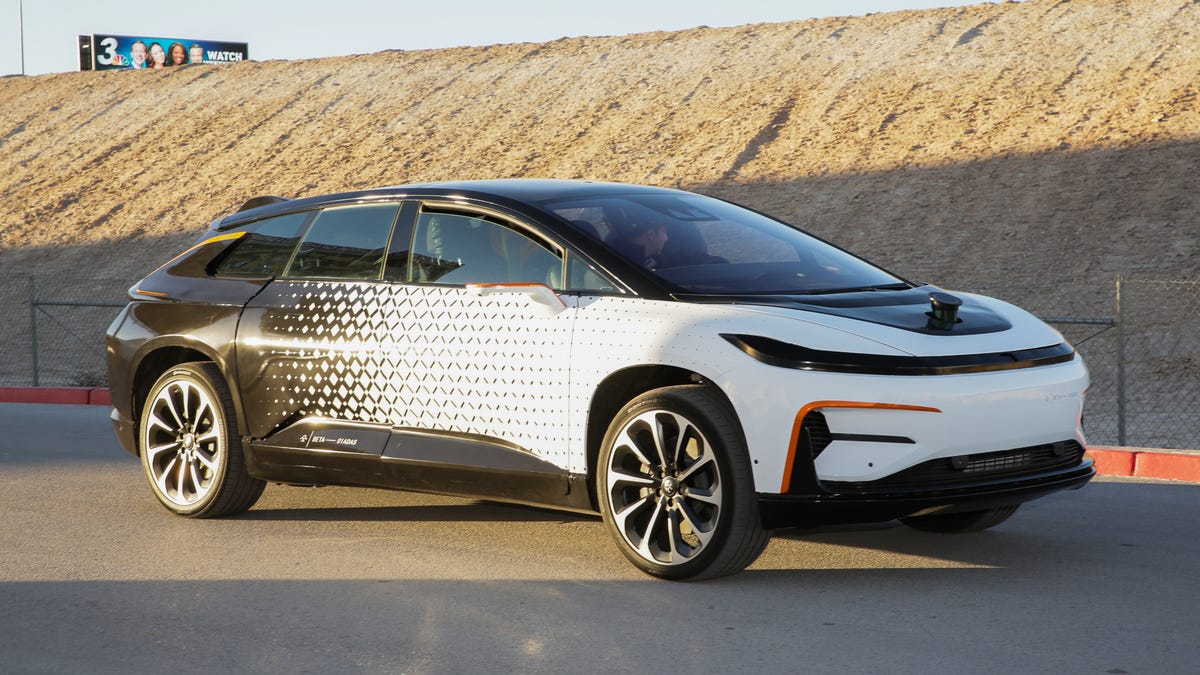Riding in cars with computers: How tech at CES changes driving
At CES, automakers and equipment suppliers showed off a horde of new concept technologies, likely to hit production in cars over the next few years, which will change the nature of driving.

Unlike a traditional car show, where automakers unveil the latest model year of this or that car, CES showcases concepts, technologies that will likely find their way into cars over the next few years. It's like looking into the future of how we will drive.
And this year at CES, we saw an impressive number of new ideas for automotive, many borrowing from the world of high-tech.
Nvidia CEO Jen-Hsun Huang holds up Xavier, a powerful computer designed to be the brains of self-driving cars.
For the past few years, self-driving car technology has been a big topic at CES, but it became even bigger this year as many vendors offered real demos. Nvidia and Audi partnered up, running both a Lincoln MKS and a Q7 on a defined test track. The cars used similar technology to follow a curved track that had areas where the lane lines disappeared, and where they had to negotiate an unexpected obstacle. Nvidia also unveiled a new self-driving super computer it calls Xavier.
Equipment supplier Delphi offered the best example of real-world self-driving, with a fully autonomous car driving on the streets of Las Vegas.
BMW gave a more limited self-driving demonstration which could go into production very soon. The company put drivers in a modified 5-series sedan, putting it in a self-driving mode on the freeway. The car wasn't capable of making its own lane changes, but it did bring out another trend at the show: what riders in fully autonomous cars will do with their time. For BMW, that entailed using the car as a tour guide and doing some online shopping.
Concept cars from Chrysler, Honda, Bosch and Toyota also tackled the idea of what a car's cabin might be like when you don't need to drive. The design preference seems to be for light and airy spaces with wide comfortable seats where you don't necessarily need to face forward.
Toyota's Concept-i includes a virtual assistant that responds to your moods.
Also showcased by BMW, and a clear trend in cars of the near future, will be integration with web services. BMW's car relied on Microsoft Cortana for voice command. Likewise, Ford demonstrated deep integration with Amazon Alexa, which not only will let drivers control a smart home , but also ask for destinations and even play Jeopardy. The Ford Alexa service comes later this year. Hyundai had previously showed off Alexa integration, and this year expanded to offering a Google Home connection in the car.
The beauty of web services is that they give automakers a working, connected voice command framework that goes far beyond the traditional in-car features, such as initiating phone calls or requesting music. Most things you can do with Amazon Alexa or Google Assistant in the home, you will be able to do in the car.
And there was one real car unveiled at CES 2017, the Faraday Future FF91. Last year at CES, Faraday Future showed off a concept car. There has been quite a bit of anticipation leading up to the production car, and this one boasted some impressive stats. Try 1,050 horsepower and acceleration to 60 mph in under three seconds. But rather than being a loud, gas-burning beast, the FF91 is electric, and goes 350 miles on a full charge.

